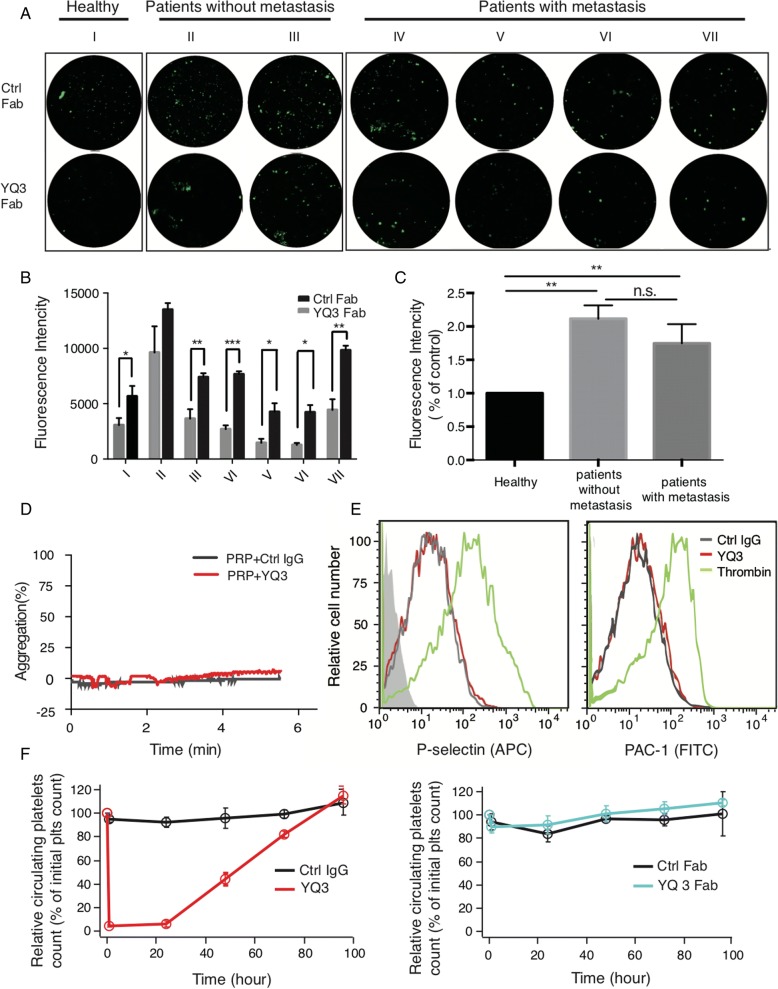Fig. 7.
YQ3 inhibits the adhesion between patients’ platelets and tumor cells without accelerating platelet clearance. a, b YQ3 inhibited adhesion of A549 lung cancer cells to patients’ platelets. a The adhesion of A549 to patients’ platelets pretreated with 10 μg/ml YQ3 Fab as observed under fluorescence microscope. I: healthy person; II/III: patients without metastasis; IV/V/VI/VII: patients with metastasis. The quantitative analysis of adhesion was shown in b, P value is indicated; *P < 0.05; **P < 0.01; ***P < 0.001. c Expression of GPIbα on platelets that were from healthy controls, patients without metastasis, or patients with metastasis. Fluorescence intensity was detected by flow cytometry. **P < 0.01, n.s., no signifance. d YQ3 did not induce platelet aggregation. The aggregation of PRP pretreated with 10 μg/ml YQ3 was detected. Negative control was in the form of normal mouse IgG. e YQ3 did not affect platelet activation. Increased expression of P-selectin and PAC-1 indicated the degree of platelet activation. Washed human platelets were treated with 10 μg/ml purified YQ3 (red) and negative control (mouse IgG, gray) or 0.05 U/ml thrombin (green) as positive control, then probed with APC-conjugated P-selectin Ab and FITC-conjugated APC-1 Ab. The fluorescence intensity was detected by flow cytometry. f Platelet survival curves for hTg mice injected with YQ3 (15 μg/mouse), YQ3 Fab (15 μg/mouse), or negative control (mouse IgG or Fab, 15 μg/mouse) (n = 6 mice in each group). Blood was drawn from mice at the time of antibody injection (0 h) and every 24 h following until 96 h after antibody injection. Platelet count determined by flow cytometry. Each figure or histogram is a representative of three independent experiments

